Foggy Mornings
As we settled into our new home, we began to notice how frequent we would get fog. Our home, nestled in a valley and surrounded by ridges green with trees is a prime spot to watch moist air coalesce into fog. Then, to watch fog rise to become cloud.
As spring turns to summer, though, the sun’s morning strength increases and the coalescing begun in the cooling evening is cut short, and the mist is lost to blue sky. There are many mornings when I’m motivated to get out of bed to witness evaporation. The science lessons I had as a kid are played out with such obviousness. We have always been immersed in this rhythm.
Everyday Sighting
Robins are such early arrivers and leave so late their presence seems perpetual, and, in much of the U.S., they are year-round inhabitants. They become such a common experience that, after the first sighting in spring, they’re easily dismissed. On my walks, looking for birds, I’ll often spot movement on the ground, fluttering ending at a tree branch, and when my eyes land on the bird I find myself saying, “It’s just a robin.” Over and over. Just a robin.
I have been paying attention to this habit to break it. Such dismissiveness can spread, and “just a robin” can easily become “just a bird” until your mind begins editing birds out of your conscious awareness. I’m certainly not concerned I’ll start forgetting about birds if I stop photographing robins, but automatic, unthinking dismissal is the fertile ground of missed opportunity.
Spa Day
Last Fall, and apologies to those who’ve already heard this, I was taking a morning stroll and was marveling at all the birds in the trees. It was a disorienting moment for me because all the birds looked like robins, but they were congregating in a way I had not previously observed. It simply didn’t make sense to me.
They were perched in the trees along Coulee Creek, taking turns at a shallow bend to bathe. One or two would splash in the water before returning to a tree branch and opening up space for their bird friends.
In their outdoor spa, they were clearly robins - discrete individuals with their red breasts. If I kept my focus on the individual birds, they made sense as robins, but my mind couldn’t fathom them as a flock. Something so common had become unfamiliar just by coming together, and, in that moment, had also sparked my curiosity.
I walk by the robin spa nearly everyday and haven’t yet seen the robins return for more communal bathing. Perhaps this fall. Until then, I’ll watch for them perched in trees, bobbing along the ground, and resting in their nests.
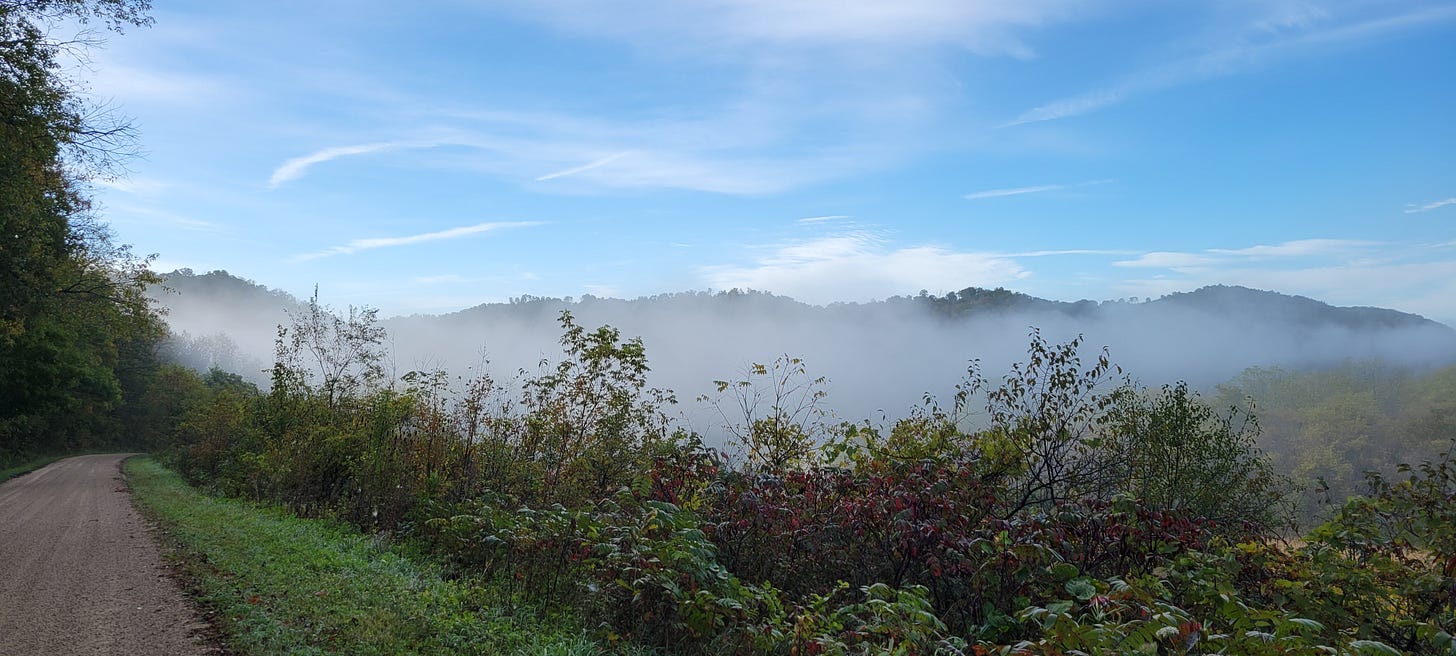
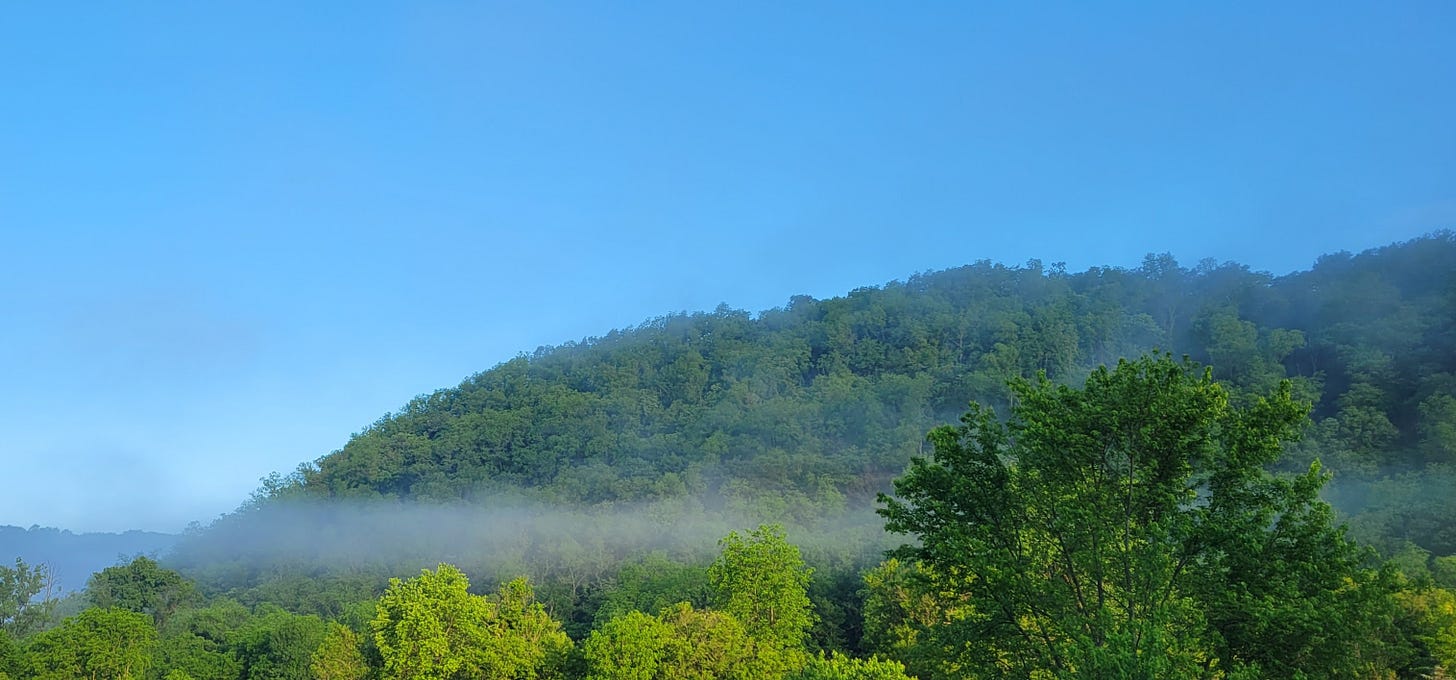
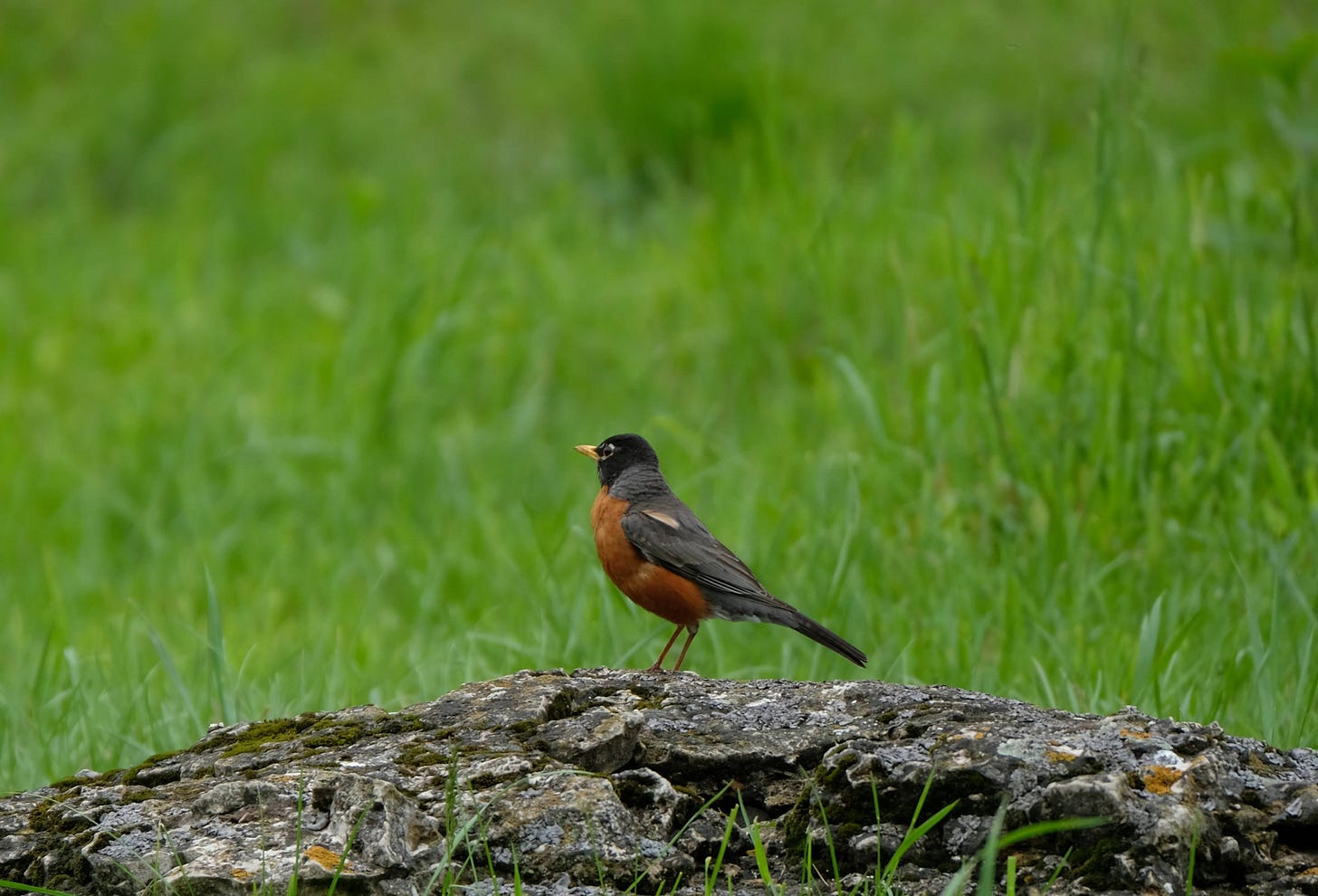
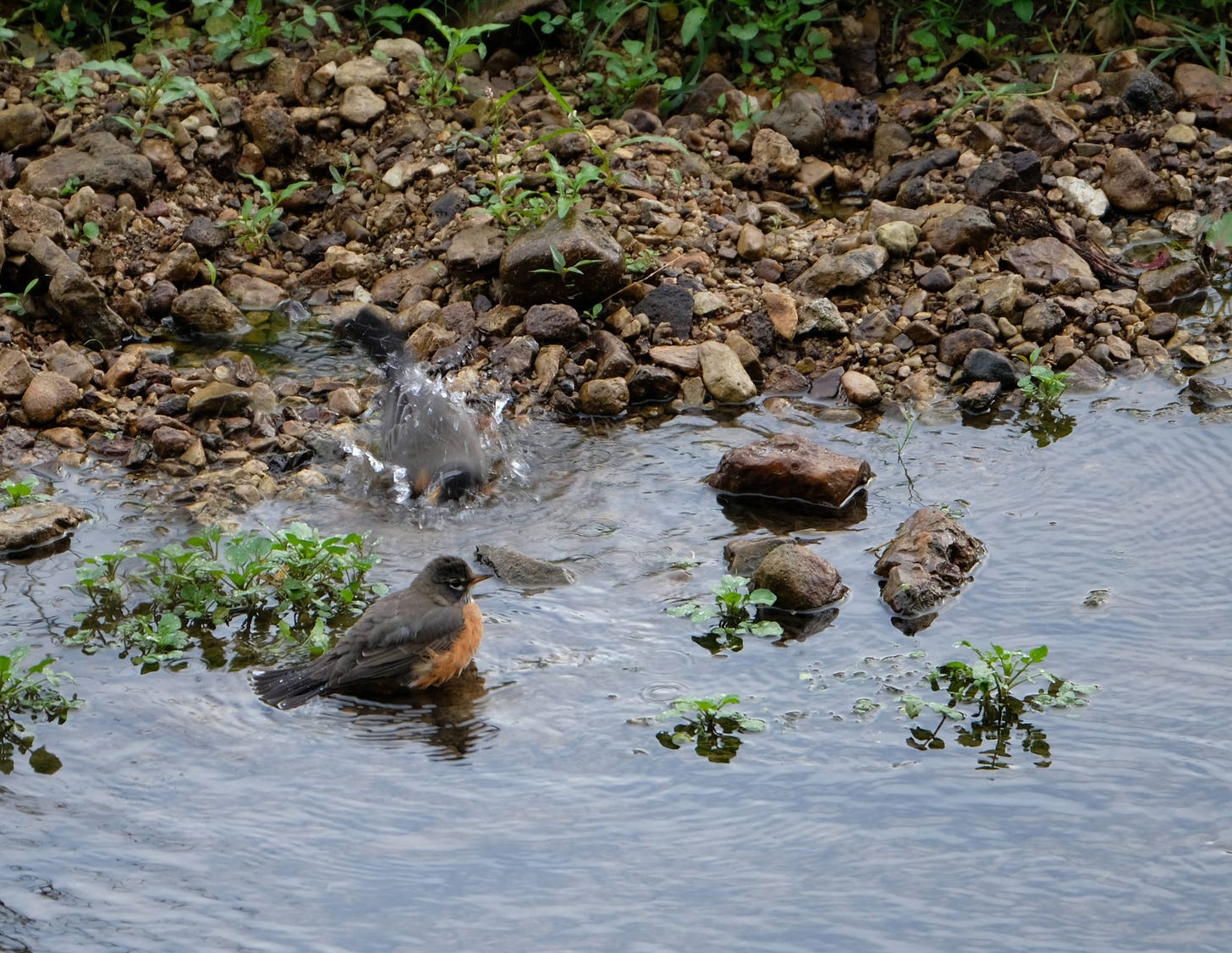
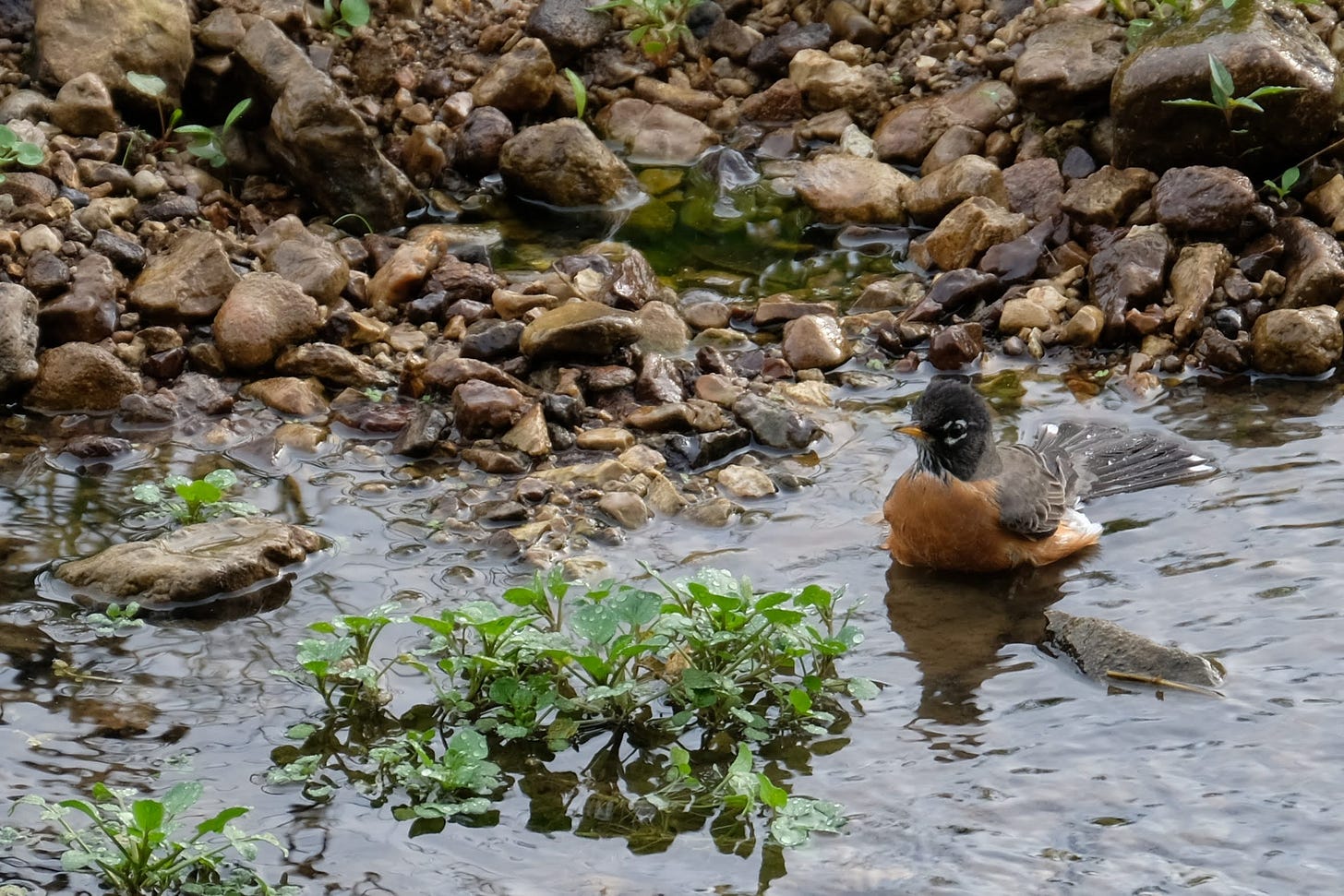
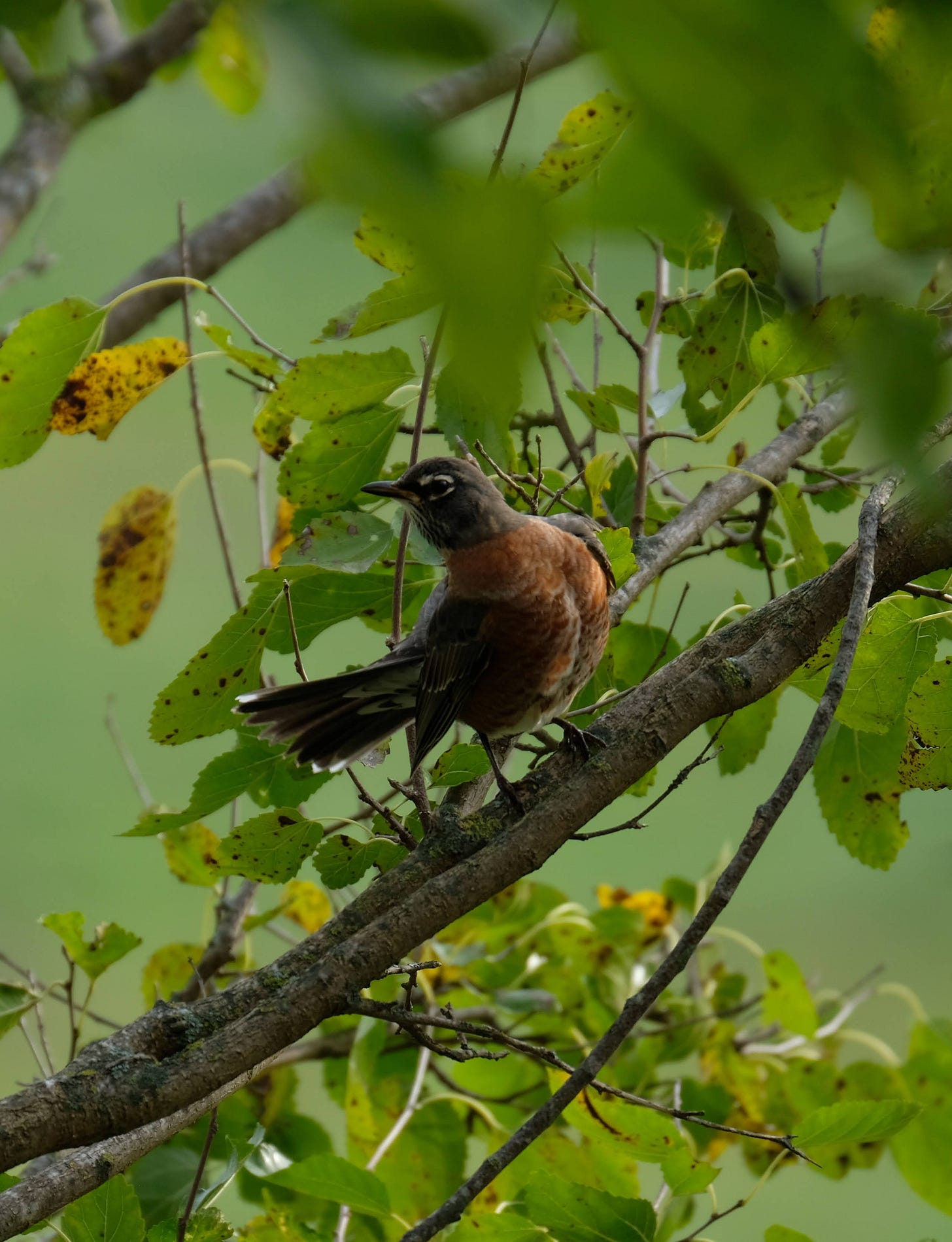
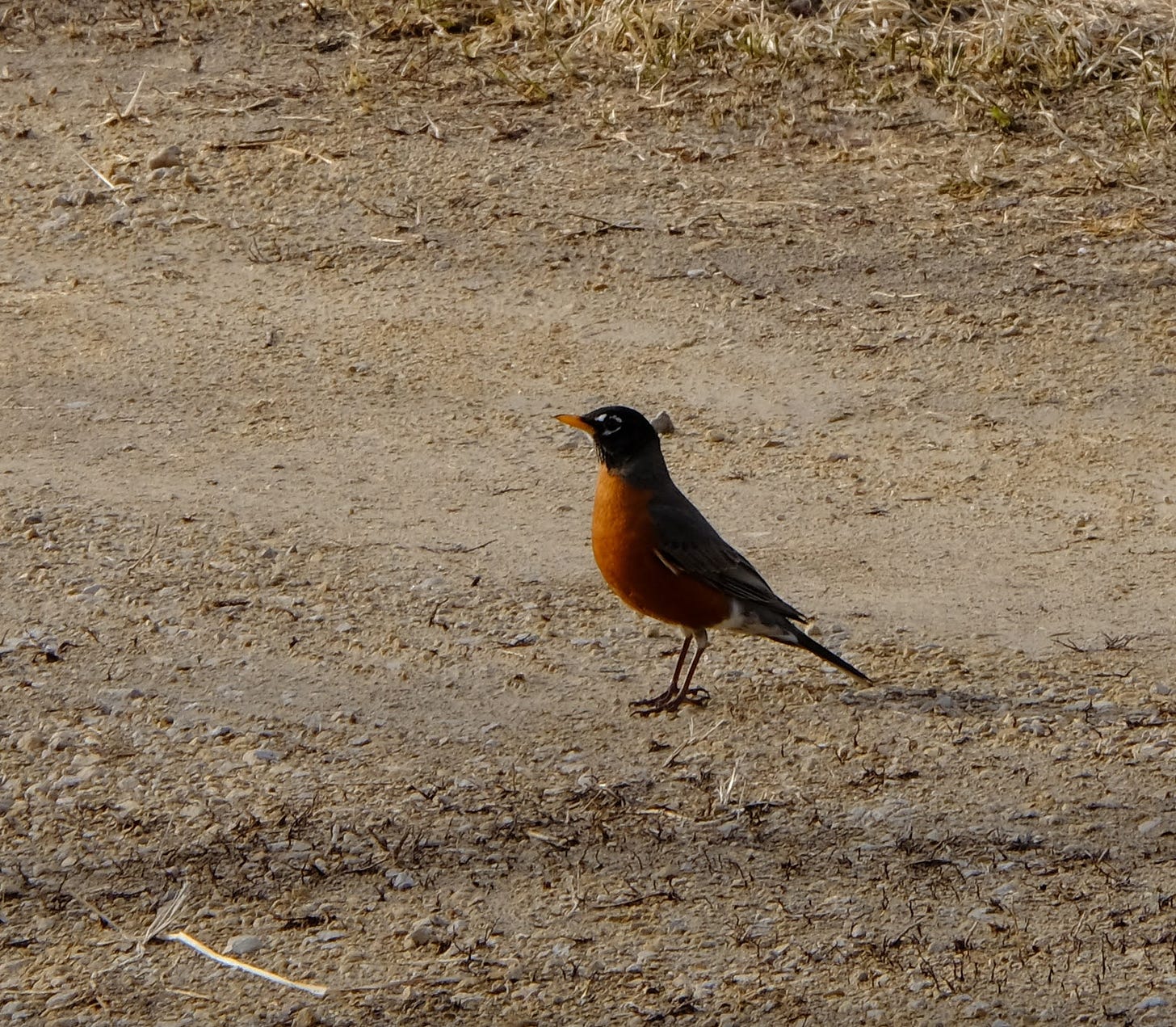
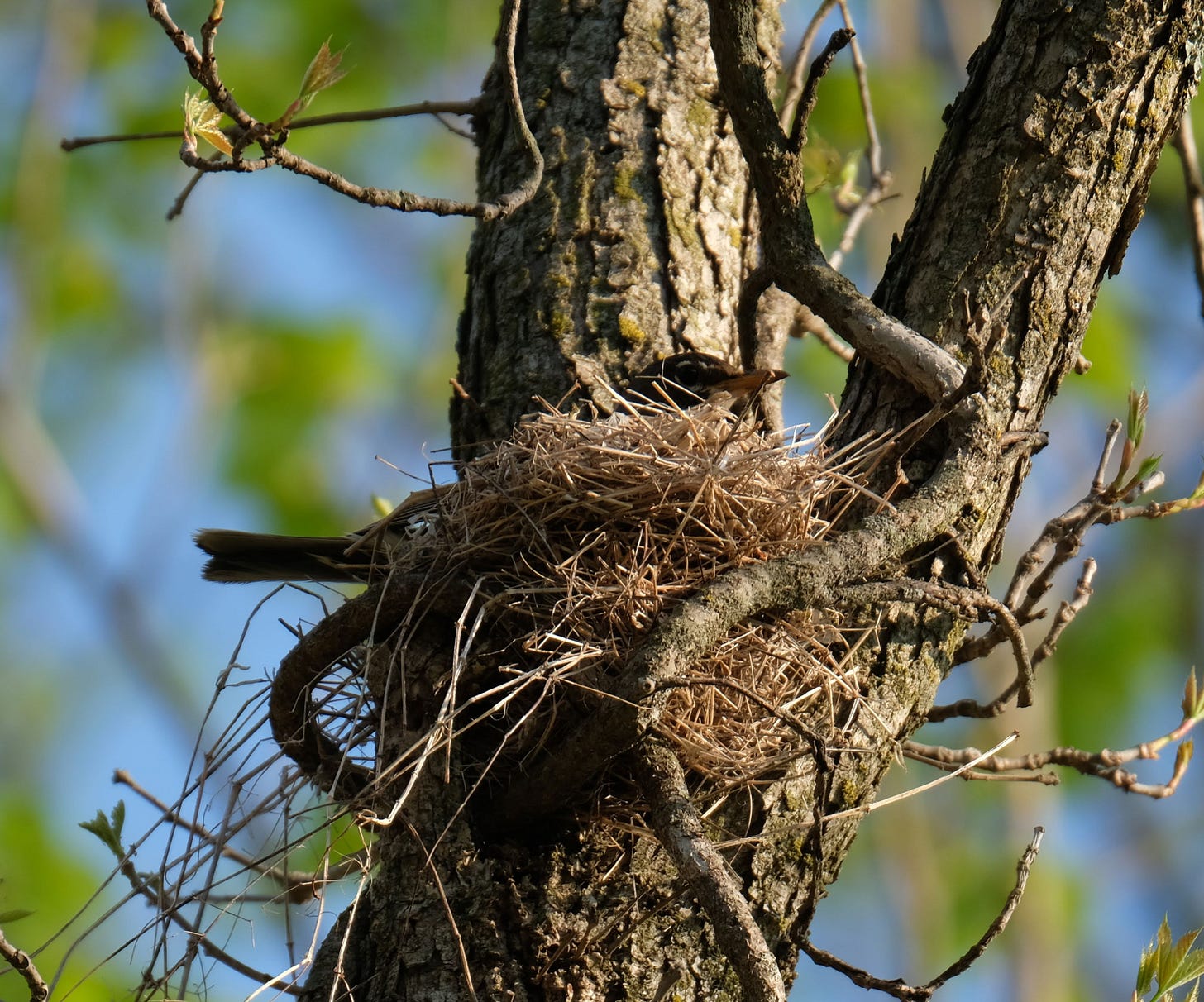
I love the robin spa! And the message to not dismiss what we commonly see.